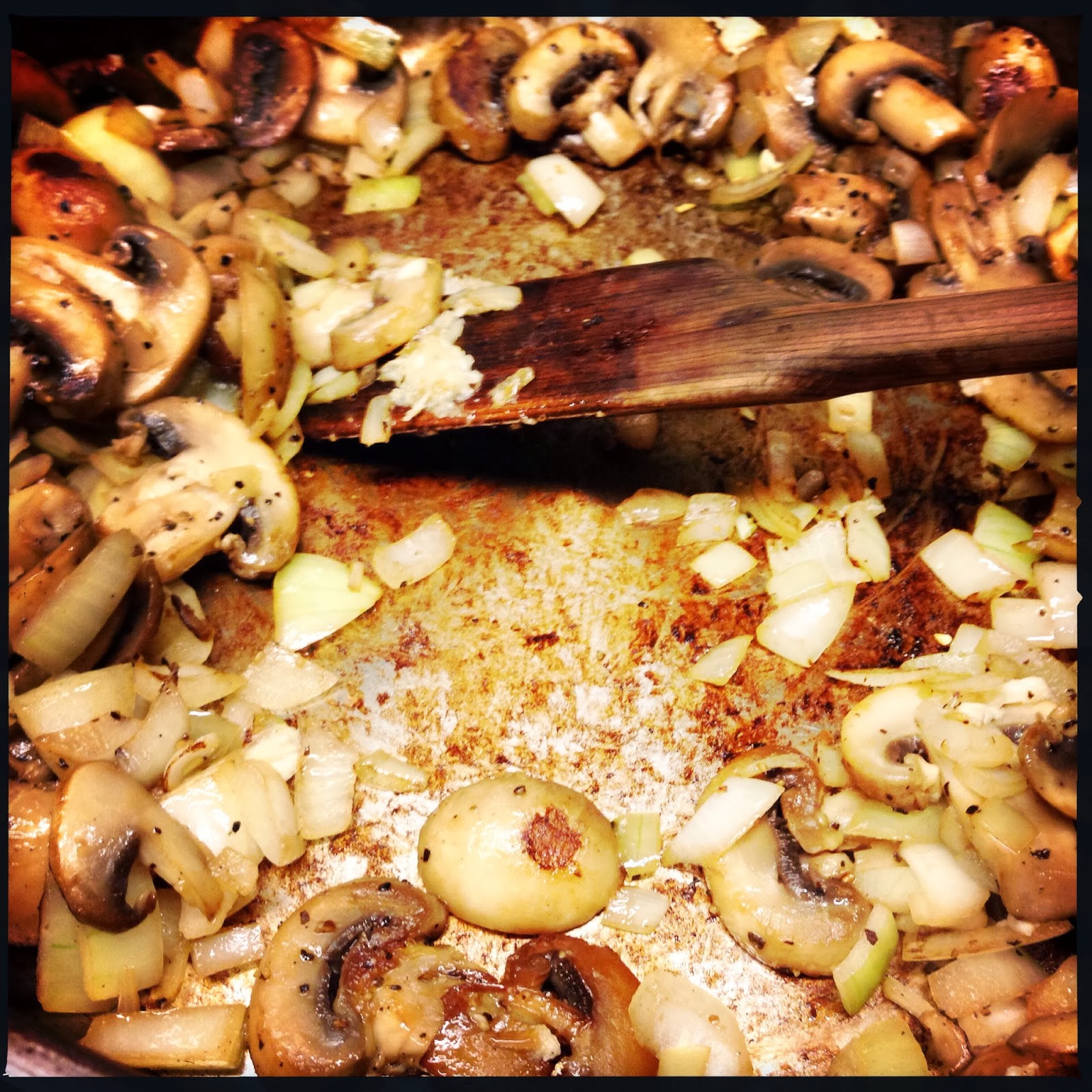So much of what I create in the kitchen is the result of staring at left overs during the day and waking up at 3 in the morning. This morning almost the first thing I did was switch on the oven and take the portion of shortcrust pastry from the fridge. 15 minutes later I was slicing cooked potatoes, grating cheese, slicing mushrooms and roughly chopping onions. I am very fond of rolling out a piece of pastry on a large sheet of baking parchment and easing it into a favourite tart Tatin tin I have, before filling the pastry shell with fruit of some sort and easing over the excess pastry to form an edge. This seemed like a really good method for creating the shell of this savoury tart. If you don't have the extra wide baking parchment, a couple of pieces overlapping will work.
For this recipe you will need:
300g of shortcrust pastry
700g of cooked potatoes sliced
250g of mushrooms sliced
200g of Gruyere cheese grated
2 small onions roughly chopped
2 cloves of garlic finely chopped
50ml of Noilly Prat
100ml of double cream
2 tablespoons of olive oil
Salt and black pepper
Begin by heating up the olive oil in a shallow pan and frying the mushrooms, 1/2 teaspoon of both salt and pepper, on a high heat until they have taken on a nice amount of colour. It is always important to fry mushrooms until they colour if you wish to get the most flavour out of them, no amount of boiling will do this. Add the onions and cook until translucent, finally add the garlic and cook only for a a minute before adding the Noilly Prat to de-glaze the pan. You should find all the brown patina that has formed on the base of the pan will come off and add flavour to the mushroom onion mix. Add the cream, check and adjust the seasoning, stir in and switch off the heat.
Slice the potatoes and grate the cheese.
Roll out the pastry on a large sheet of baking parchment to form a large circle roughly 3mm thick and 330m wide. Ease the pastry into a baking tin. Begin to fill the pastry shell starting with a layer of potato, followed by a layer of the mushroom mix and finishing with a layer of grated Gruyere. Repeat these layers, bring the edge of the pastry around to form an edge. I bring the edges of the baking parchment together to form a makeshift lid so that the top doesn't colour too quickly during cooking.
Bake for an hour at 180C.
Notes :
You can of course fill this sort of tart with a mixture of potato, cheese and pretty much any other highly flavoured vegetable. Leeks for instance would be good, as would fennel, simply sweat the vegetable in a pan until tender and add whatever liquid is suitable, to make a small amount of sauce, cream in the case of leeks and perhaps a little chopped tomato in the case of fennel.
Even though the potatoes are pre-cooked, baking the tart for a full hour allows for the pastry to be deliciously crisp and for the filling to become rich and creamy.
















